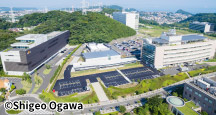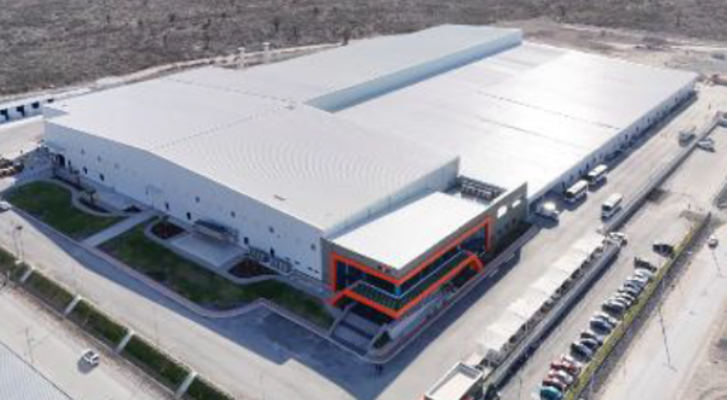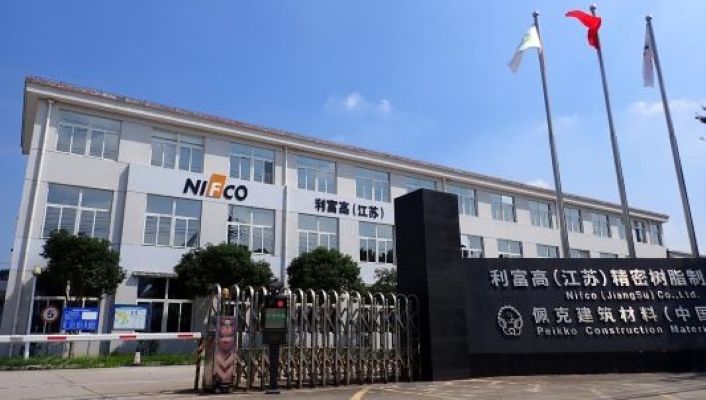Based on our long-term vision “Nifco makes Ideas a Reality," we are strengthening our organization and reviewing our corporate philosophy framework, aiming to be a company that can contribute to the survival of society.
Masaharu Shibao
Representative Director, President & CEO
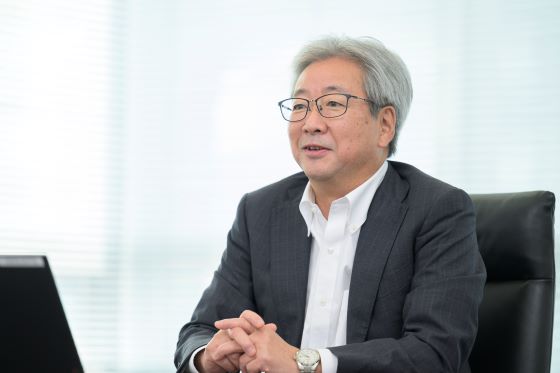
Interview date: August 2024 Updated: September 2025
-
*
This article is based on the CEO's message issued in FY2024 and has been updated to reflect the content as of August 2025
Seeing social issues as opportunities, including major changes in the automobile industry
Since assuming the position of CEO in 2023, I have taken a longer-term perspective and have begun undertaking various initiatives with ESG in mind to consider what and how Nifco can continue to grow sustainably over the next several decades and beyond. As a company, we will view the various social issues that may arise as opportunities, including the major transformation of the automotive industry, and to contribute to society by creating new operations and businesses, for example.
This is why our long-term vision set forth as our social mission is “Nifco makes Ideas a Reality." When we think of ideas, we tend to think of ideas for products (things), and for many years our company has also been turning a wide variety of ideas into products and supplying them to the world. “Ideas” here means materializing business concepts related to “experiences” or “services” into concrete forms with the aim of solving social issues. Through these efforts, we will develop businesses that contribute to society while growing our company.
Creating a strong organization by establishing three tiers based on age demographics
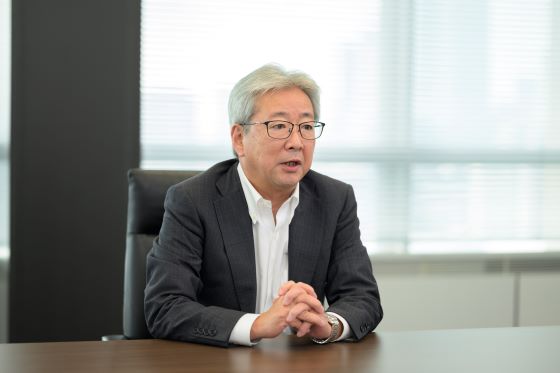
To realize this long-term vision, everyone, from management to employees, must have a sense of ownership and pass the baton to the next and future generations toward 2035 and beyond. Nifco is a company that operates globally across six regions, including not only Japan but also North America, Europe, Southeast Asia, China, and Korea, so it is essential that we share the same vision across all regions.
One of the initiatives we have launched for this purpose is creating a strong organization by setting up three-tiered lines based on age demographics. The first line consists of top management from each region, the second line comprises business site managers, and the third line is made up of mid-career employees around the age of 40. Each line will have roughly 20 people, with participants rotated as necessary, and meetings of each line will be held about twice a year. The first line is tasked with envisioning the future. It discusses what the company should aspire to become and formulates guiding principles to achieve that vision. In FY2025, three meetings have already been held in Japan, Europe, and China. Discussions on the Long-Term Management Plan looking ahead to 2035, ten years from now, have progressed, and the direction is largely taking shape. The second line focuses on achieving the commitments outlined in the Mid-Term Management Plan for FY2024 to FY2026, addressing the challenges and measures needed to meet these objectives. In FY2025, two meetings were held, divided between Europe/America and Asia due to differing regional characteristics. The third line imagines their future roles as the next generation of leaders—that is, as top management and executives—and discusses what kind of company they aspire to build. In FY2025, three meetings were held globally, in Nagoya, Indonesia, and Thailand.
We believe that if these meetings allow each tier to share information and understand who is strong in what in which region, and who they should approach to make business go more smoothly, the organization will be strengthened. In addition, meetings for the third line, the youngest people in the three tiers, are generally held in English. The hope is that by making it in English, participants will be able to access business and human resources information that are not available in a Japanese-speaking environment. I believe that people are, after all, the most important thing in a company. Unearthing talent that lies dormant not only in Japan but elsewhere in the world is a prerequisite for growth.
Reviewing the corporate philosophy system and increasing employee engagement

Increasing employee engagement is essential to building a strong organization. To achieve this, we undertook a review of our corporate philosophy system. The key point is that it starts from each employee's individual “My Purpose,” as shown in the diagram below.
Everyone has their own values and outlook on life, such as “this is what I was born to do” or “this is how I want to contribute to society.” Where those values overlap with the company's “Purpose” is “My Purpose.” In other words, it all starts with how each of us can utilize our own values within the company.
I hope that this will encourage each and every employee to take the initiative in thinking about how they can contribute to the company.

I also feel very strongly about the importance of disseminating information. Therefore, I place emphasis on communicating both internally and externally. To have employees possess a deep understanding of things within the company, whether it's the Mid-Term Management Plan or My Purpose, I find that it's better for me to visit them in person, whether in Japan or overseas, and explain it. As we meet face-to-face many times, our discussions gradually become more in-depth and we gain hints for steering the business forward.
At the same time, communicating Nifco's initiatives to the outside world will help enhance corporate value. We will also focus on promoting new products and co-creating values with external partners, while putting effort into brand building (branding) for Nifco. Because Nifco is a B2B company, its general recognition outside the automotive industry is not very high. This is why we hope to have more people to know about Nifco and its appeal through branding activities. As part of this, we entered into an official sponsorship agreement in FY2025 with the six Pacific League professional baseball teams, promoting the Nifco brand to a wide audience through stadiums and media. Through sports sponsorships like this, we are working to establish the brand image of “Nifco = a company that supports challenge and growth.”
We believe that raising recognition in this way will also lead to new encounters with outstanding talent. By making more people aware that “there is a company called Nifco,” it will become easier to attract talent who resonate with our values, and I am confident that this will greatly contribute to the creation of new businesses that I will be explaining next.
Three strategic points in the Mid-Term Management Plan
Our Mid-Term Management Plan for the next three years (FY2024-FY2026) has been formulated based on three strategic concepts.
1. Growth investment
Although there were some losses due to the transfer of subsidiaries that had issues, we were able to largely achieve Mid-Term Management Plan targets for FY2021 to FY2023 (ended March 2024). However, what we were unable to achieve despite having ample funds was to make growth investments. However, in FY2024 which marked the start of the new Mid-Term Management Plan, we invested 19 billion yen in a new plant in Mexico for the North American and Korean OEM markets. For FY2025, we will continue to make growth investments of a similar scale, and without insisting on self-reliance, we will solidly launch new businesses through investments in start-ups and M&A activities.
2. Glocal management
Up until now, our company has operated a business model of developing products in Japan and selling them worldwide, but achieving sustained growth will require more than that. We are considering delegating a certain amount of authority to the head of each region so that they can respond quickly to projects that are suited to local characteristics and needs. We are also aiming toward creating locally-led businesses, that is, launch new businesses within the automotive industry. In FY2024, we expanded Chinese capital businesses with high future potential and consolidated plants in Southeast Asia, where growth had shown signs of slowing. We will position the new businesses mentioned in the first growth investment and the creation of businesses through glocal management as the two main pillars, making them the driving force of our growth.
3. Improving employee engagement
One of the means for improving employee engagement is establishing My Purpose, as mentioned above. I experienced this myself at a My Purpose formulation workshop held for executive officers. Trainees had to actually think about the connection between their own My Purpose and the company's purpose, and find a path for applying their own values and outlook on life within the company. We will also further promote diversity to revitalize our organization and firmly secure the next generation of talent. In particular, among our overseas bases, Thailand has been actively creating an office environment that enhances employee engagement and holding a variety of events. Also drawing on these kinds of initiatives, we will work to improve employee engagement across the entire global organization.
In addition, we will further advance our efforts toward achieving carbon neutrality and activities for environmental protection. Our main products are plastic parts used in automobiles. While they would seem to go against the intent of our environmental measures because they are resin products, these actually reduce the weight of the finished vehicle and improve fuel efficiency, which in turn have the overall effect of reducing CO2 emissions. Though this example represents an indirect contribution, we will continue to seek out further ways to make environmental protection integrated with our business. In addition, while electricity consumption is essential for manufacturing, we will work to reduce CO2 emissions and costs through means such as installing solar panels.
Message to Stakeholders
Nifco strives to solve social issues through its business and aspires to be a company that can contribute to the survival of society. Naturally, for this to happen, Nifco itself must be a company that can survive into the future. Nifco will continue to maintain and push forward sustainable growth.

